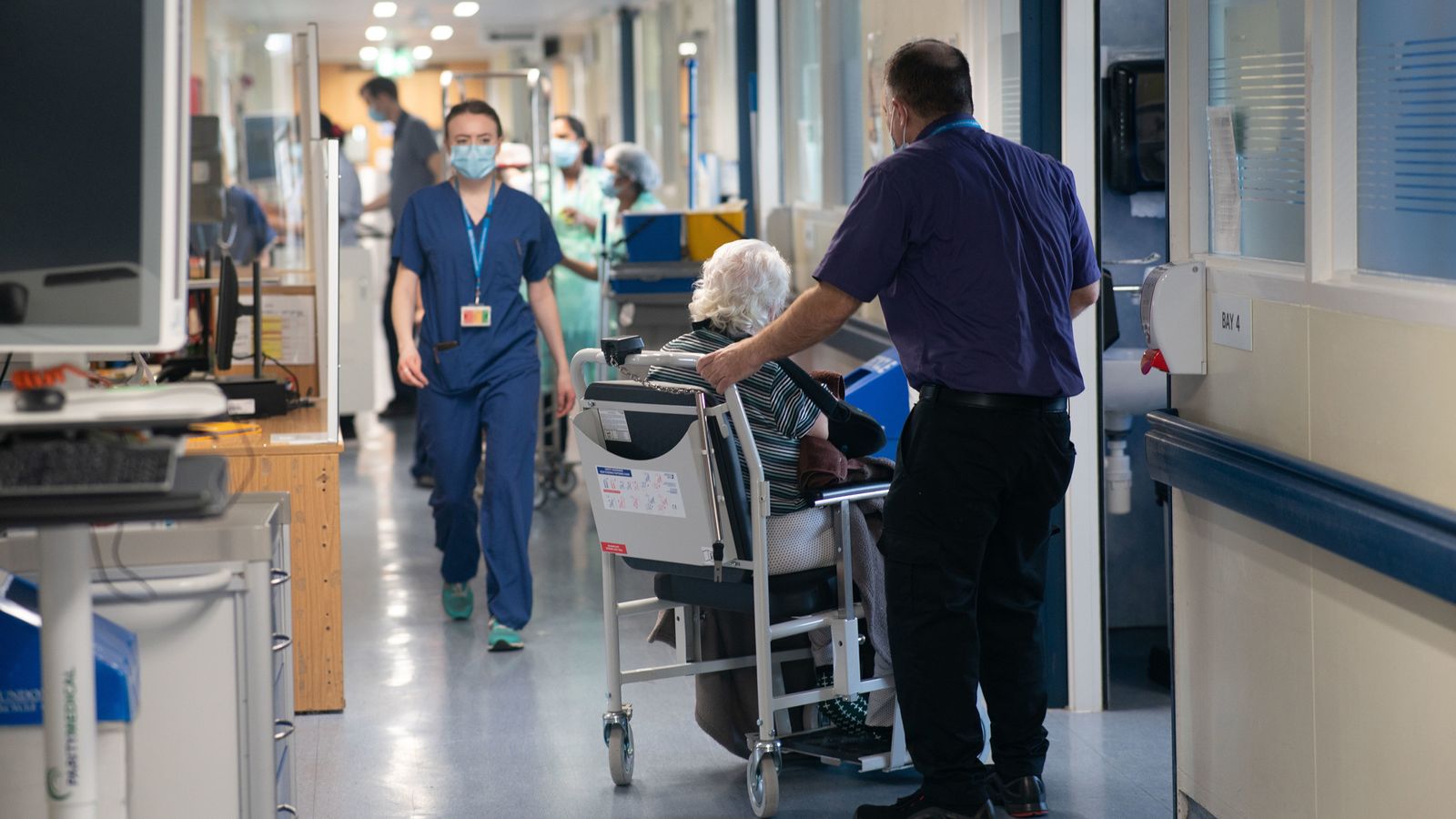'Digital mimics' among 16 projects launched to help NHS with winter pressure
Researchers are using artificial intelligence (AI) to "digitally mimic" households struggling with the impact of the cost of living crisis to simulate the most effective ways to help.

It's one of more than a dozen projects spanning data analysis to machine learning that have been launched to help counter the winter pressures facing the NHS.
It comes as the health service buckles under the strain of large numbers of flu and COVID cases, a huge backlog exacerbated by the pandemic, and mounting wait times for ambulances and emergency and routine care.
The 16 projects, launched by Health Data Research UK (HDR), hope to deliver findings by the end of March.
Health Secretary Steve Barclay said the goal was to channel "the spirit of innovation" that led to the rapid rollout of coronavirus vaccines, with the government providing £800,000 in funding.
If you are an NHS worker and would like to share your experiences with us anonymously, please email NHSstories@sky.uk
While many of the projects seek to find ways of using technology to relieve pressure on hospital staff, others seek to address some of the root causes of the troubles facing the NHS.
One such initiative uses existing data and AI to "digitally mimic" household environments and simulate interventions that might improve the standard of people's health at home - especially children.
Dr Martin Chapman, from King's College London, explained: "Living in cold, damp, and mouldy homes leads to chest conditions in children and mental health problems in adolescents, and rising energy costs mean more people than ever are living with heat poverty.
"We're investigating the effectiveness of interventions like support for energy bills on the health of young people by using AI to digitally mimic their household environments and evaluate the impact of simulated interventions.
"This will help guide future policy changes to improve health conditions, reduce inequalities, and in turn reduce pressures on NHS services."
Using the same infrastructure that powered Siren, which collated and published regular public data on COVID at the peak of the pandemic, the winter pressures sub-study will see it expand to include flu and a common children's illness called Respiratory Syncytial Virus (RSV).
Another project aims to use AI to help clinicians more easily identify high-risk patients.
By analysing patient data, an AI model could suggest the most suitable ward for a patient to be on, those at most immediate risk of deterioration, and when someone should be discharged or not.
Also focused on hospital discharge times is a project called DS4SmartDischarge.
This uses machine learning (the process of teaching a computer to do something by itself) to help computers categorise patients based on the risk of different discharge outcomes.
Another team made up of health care workers, hospital leaders and the Society of Acute Medicine is also using machine learning to help build a model that identifies patients in need of same day emergency care.
Patients would be graded based on data like blood pressure, medications and bedside tests, helping staff make a decision within four hours of them coming to hospital.
Project lead Professor Elizabeth Sapey said the work would help with "reducing inequalities in care and relieving pressure on emergency services".
While the projects come too late for the current crisis enveloping the health service, it is hoped they will produce results that help it better cope in the long term.
Professor Cathie Sudlow, chief scientist at HDR, said they would hone in on "key pain points" in the NHS.
"By using existing data, research teams, and infrastructure, these projects are able to respond rapidly to evolving pressures on the NHS," she added.
Each of the projects has been partnered with analysts in the Department of Health, which sponsored the plans; the Office for National Statistics; and the UK Health Security Agency.
Once findings are delivered in March, it is hoped they will be published later in the year.
-sky news






